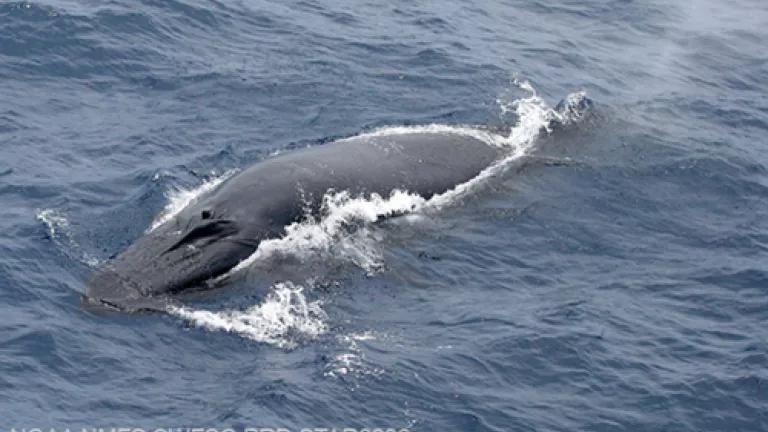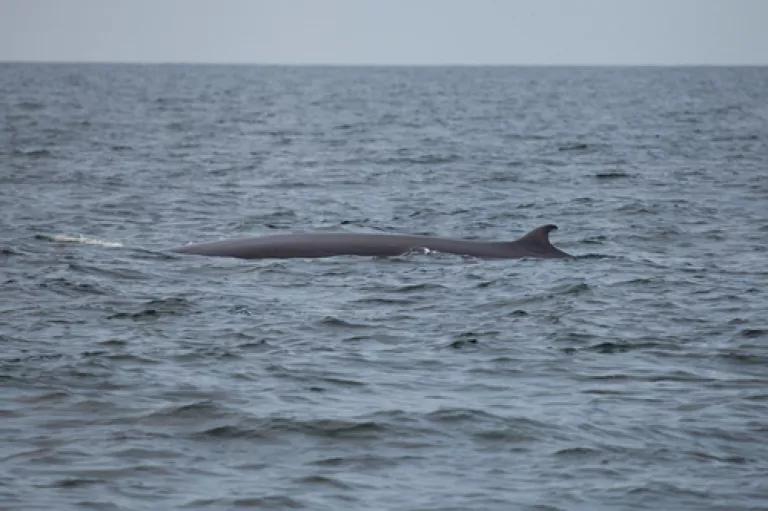
The Gulf of Mexico's only resident great whale is one step closer to endangered species protection. We petitioned the National Marine Fisheries Service (NMFS) back in September to add the Bryde's (pronounced BROO-dus) whale to the federal endangered species list. Today, NMFS released its 90-day finding and agreed that there is substantial scientific support for granting the whales protected status. The finding, over three months overdue, was beyond doubt.
Photo credit: NOAA
This small, genetically unique population numbers fewer than 50 whales. Its habitat has dwindled to a single area, the DeSoto Canyon, off the Florida panhandle. And it's under attack from a host of current and looming threats, including the danger of collisions with ships, harm from deafening ocean noise related to oil and gas exploration, and pollution from the Deepwater Horizon spill, which marks its fifth anniversary next month.
Without federal protections, the Bryde's whale's prospects are dim. Under President Obama's "All-of-the-Above" energy plan, oil and gas exploration and extraction in the Eastern Gulf and elsewhere in the region is expected to increase in coming years. Oil can interfere with the filtering abilities of baleen whales and can cause skin irritation and chemical burns. Pollution related to oil and gas activity bioaccumulates, and mother Bryde's whales pass those toxins along to their calves through the placenta and lactation, leaving the young whales particularly vulnerable. Exposure to another major spill would almost certainly be a disaster for these whales, which are teetering on their tipping point.

Photo credit: Ocean Alliance
In wildlife conservation, we often talk of certain species as the proverbial "canary in the coal mine," i.e., a particularly sensitive species that serves as an early-warning system for others that may be affected by the same harmful conditions. But the Bryde's whale is no canary. It's closely related to blue and humpback whales, can weigh over 45 tons, and can grow to be 40 feet long. It's known for spectacular feeding behaviors, which involve lunging mouth agape through schools of fish and krill. It's descended from whales that have been around for millions of years. And yet this unique population in the Gulf of Mexico is almost gone. We are way past killing the canaries and have moved on to the whales.
The 90-day finding is a first step. Now, NMFS must conduct a formal status review of the species. Based on the best scientific information and with opportunity for public comment, NMFS must assess the whale's plight, any curtailment of its habitat, the population's trend, the inadequacy of current laws to provide protection, and other threats affecting the whale's current existence. At the one-year mark, the agency must make another finding that the listing either is or isn't warranted. The agency's preliminary listing decision is due by this September 18th -- the one-year anniversary of when NRDC submitted its petition. That decision can't come too soon. Every day without federal protection is a dangerous gamble for these whales.
